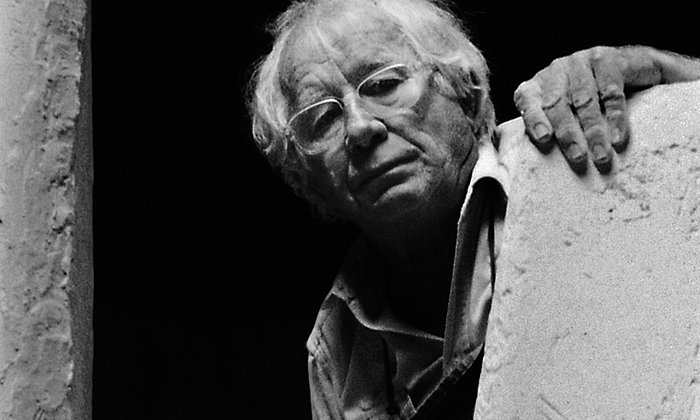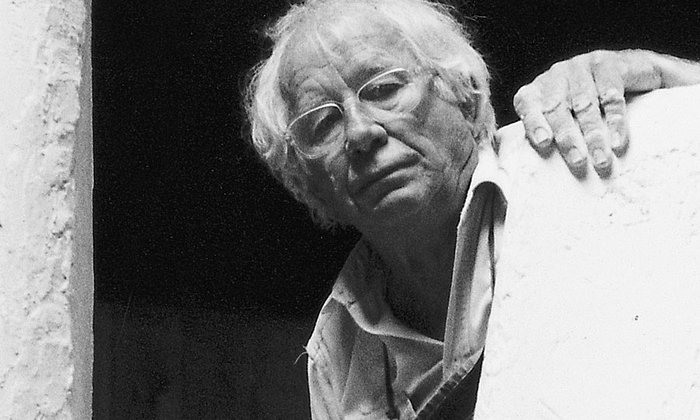Exhibition of life work of the late professor emeritus and sculptor Fritz Koenig in Florence
The art of connecting home with the world
![[Translate to en:] Panorama auf Florenz vom Boboli-Garten mit zwei Skulpturen von Fritz Koenig (v. r. n. l.: Großer St. Martin, 1963/1964; Große Flora V, 1977/1978). (Foto: Le Gallerie degli Uffizi) [Translate to en:] Panorama auf Florenz vom Boboli-Garten mit zwei Skulpturen von Fritz Koenig.](/fileadmin/w00bfo/www/NewsMigration/news_images/Fig._20.jpg)
Worldwide fame and an abiding love of home. Fritz Koenig (1924–2017) is widely regarded as one of the most important sculptors of the 20th century. Despite his international success, he maintained strong ties all his life to his home region of Lower Bavaria, where he created all of his major works. His work is currently on display in the renowned “Gallerie degli Uffizi” collection and the nearby Boboli Gardens. The retrospective, which will continue until October 8, 2018, presents sculptures and drawings from the last 40 years of the artist's life – including three works from Munich, which will be returned to their original location after the exhibition. The retrospective is being held under the patronage of Duke Franz of Bavaria, an important art collector and a personal friend of Fritz Koenig.
Against the backdrop of Florence
The bronze, stone and corten steel works by the Bavarian sculptor appear monumental amid the vegetation in the Boboli Gardens, which date back to the Renaissance. Fritz Koenig combined gentle and rough shapes in his works. The biomorphic forms often appear unstable, but nevertheless maintain the artist's carefully studied sense of balance. The overlapping and interwoven basic shapes – spheres, cones and cylinders – formed an integral part of Koenig's sculptural vocabulary from his earliest works.
Between the figurative and the abstract
At the age of 40 he was appointed to a professorship at the Technical University of Munich, where he headed the Chair for Sculptural Design until his retirement in 1992. Principal themes of his work were above all love and eroticism as well as birth and death. Koenig's works are situated on the lines between form and geometry and between the figurative and the abstract. “With his physical-mental power of expression, Fritz Koenig astounded generations of architecture students, inspired many of them, and decisively shaped others,” said Prof. Wolfgang A. Herrmann, the president of TUM, in his eulogy for Fritz Koenig.
Global fame in New York
The sculptor attained worldwide fame through his bronze sculpture “The Sphere”, which was placed outside the World Trade Center in New York in the early 1970s. It withstood the terrorist attacks of September 11, 2001. Today the badly damaged work stands as a reminder of the events of that day, at the World Trade Center Site, close to its original location. Among other works by Koenig are the memorial of the Federal Republic of Germany at the former Mauthausen concentration camp and a granite beam commemorating the victims of the attack at the Munich Olympics in 1972. In the late 1950s and early 1960s, prominent purchasers of his works included, among others, the influential art collector Peggy Guggenheim and the Museum of Modern Art (MoMA) in New York.
Return home
In later years, Fritz Koenig turned away from the art world and lived a retired life with his wife Maria at Ganslberg, his farm near Landshut. The sculptor died in his Lower Bavarian home at the age of 92. Fritz Koenig was a member of the Berlin Academy of the Arts and the Bavarian Academy of Fine Arts. He was awarded the Bavarian Maximilian Order for Science and Art and the Order of Merit of the Federal Republic of Germany.
More information:
Technical University of Munich
Corporate Communications Center
- Lisa Pietrzyk
- lisa.pietrzyk@tum.de
- presse@tum.de
- Teamwebsite

